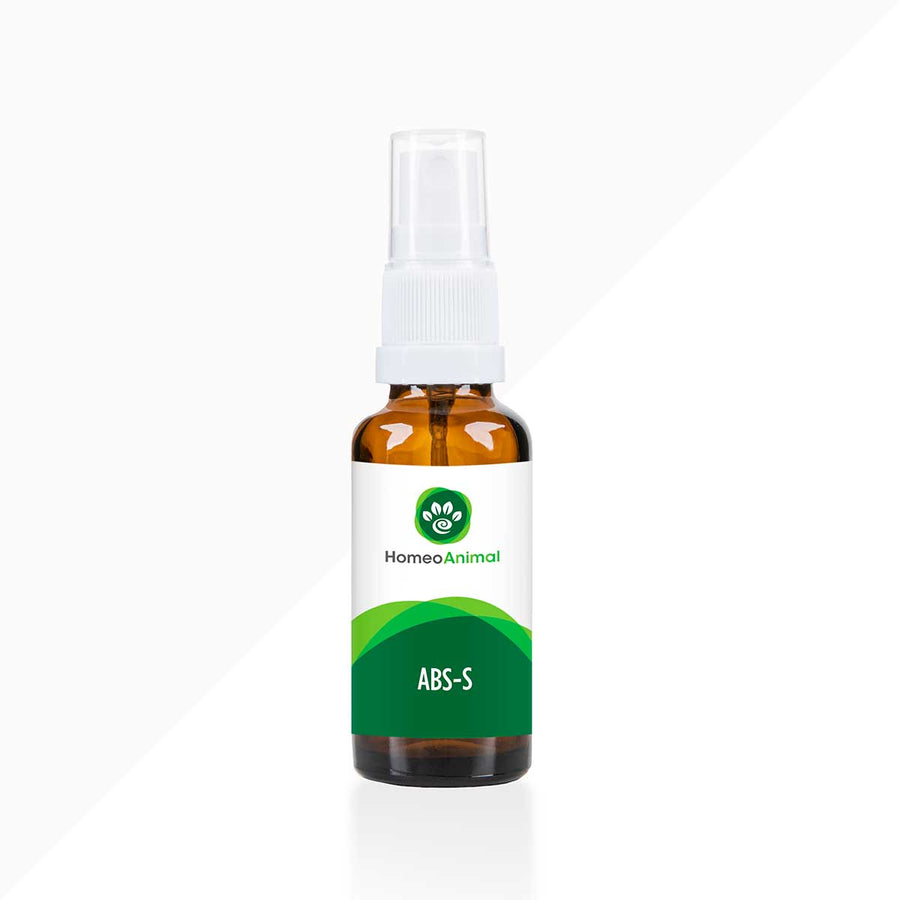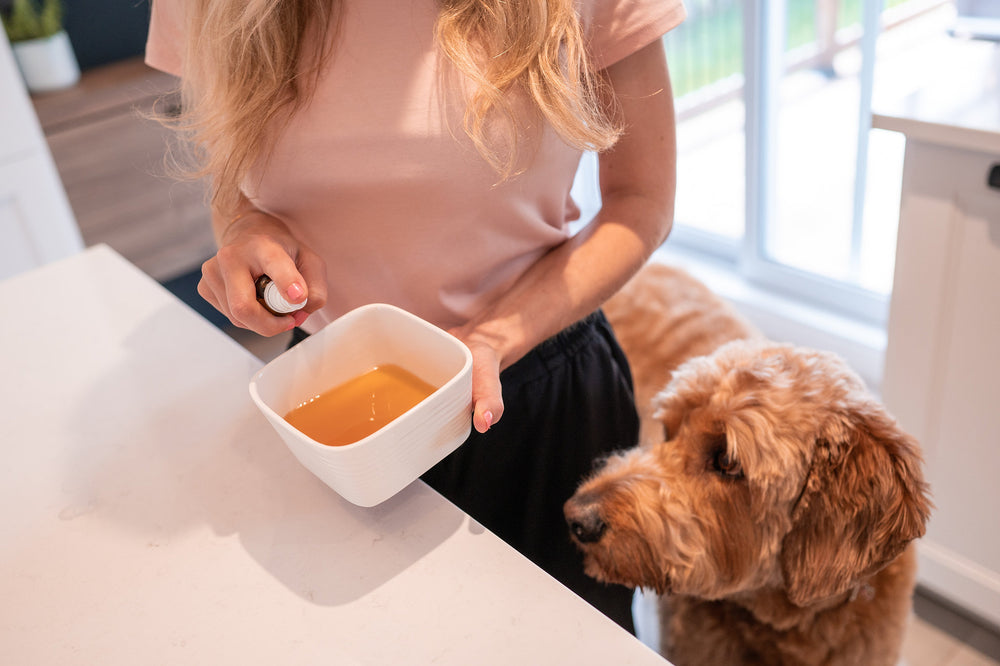Vet-Insights: Your Ultimate Guide to Abscesses in Dogs
List of Contents
- What Causes Abscesses in Dogs?
- Where are the Common Locations for Dog Abscesses?
- What are the Symptoms of Dog Abscesses?
- How are Abscesses in Dogs Diagnosed?
- How Do You Treat Dog Abscesses?
- Can You Naturally Treat Dog Abscesses At Home?
- What NOT to Do When Your Dog Has an Abscess
- When Should You Seek Immediate Veterinary Care?
- A Quick Guide to Dog Abscess Recovery and Prevention
- FAQs

A dog abscess is a pus-filled swelling that forms beneath the skin as the body responds to an infection or foreign substance. Typically caused by bites, scratches, or puncture wounds, it consists of dead white blood cells and inflammatory fluids.
A fibrous capsule forms as purulent material accumulates beneath the skin, leading to increased pressure and painful swelling. If not treated, the growing pressure may eventually cause the abscess to rupture.
Without treatment, an abscess can lead to secondary infections like cellulitis or a systemic infection, making the condition more severe. Timely intervention is crucial, as untreated abscesses in dogs and cats can sometimes become life-threatening.
Moreover, canine abscesses can develop anywhere on your pet’s body and require prompt attention to prevent complications. Early veterinary assessment is essential for accurate diagnosis and appropriate treatment.
What Causes Abscesses in Dogs?
Several factors can contribute to the development of abscesses in dogs. Below are some common risk factors that may lead to their formation:
- Penetrating injuries: Wounds from bites, splinters, scratches, or other trauma can introduce bacteria beneath the skin, creating the perfect environment for infection to develop.
- Foreign objects: Sticks, grass seeds, and other debris can become lodged beneath the skin, leading to irritation, infection, and abscess formation. Splinters and foxtails are among the most common culprits.
- Underlying infections: Abscesses can also develop due to internal infections, such as dental disease or infected anal glands. Common causes include tooth cavities and gum disease. Anal sacs can get infected when they are blocked (they fail to empty naturally).
Here’s something interesting: A dog’s abscess is actually a sign of its immune system at work—an effort to isolate and control an infection.
This response is often triggered by bacteria such as Staphylococcus spp., Streptococcus spp., Pasteurella multocida, Escherichia coli (E. coli), Proteus spp., Pseudomonas aeruginosa, and anaerobic bacteria like Fusobacterium and Bacteroides.
Where are the Common Locations for Dog Abscesses?
While this may sound odd, dog abscesses appear in common areas of the body. The following are the spots where you will likely encounter an abscess:
Skin
When the skin experiences trauma, its integrity is compromised, creating an entry point for bacteria. This triggers an immune response that isolates the infection, often resulting in pus accumulation and the formation of an abscess.
Dental areas
A dental abscess is a bacterial infection that develops around the root of a tooth, often caused by decay, injury, or gum disease. It can lead to pain, swelling, and, if left untreated, more serious complications. Treatment typically involves draining the infection, prescribing antibiotics, or performing a root canal.
Anal sac
Blocked or infected anal sacs occur when secretions build up, creating an environment for bacterial growth. This leads to inflammation, swelling, and pain. If left untreated, pressure can cause an abscess to form, which may rupture and release pus. In such cases, medical treatment—such as drainage or antibiotics—is often necessary.
Infected neoplastic mass
Cancerous masses can become abscessed when necrotic tumor tissue creates an ideal environment for bacterial infection. Poor vascular supply within tumors weakens the immune response, allowing pathogens to proliferate. Additionally, immunosuppression from cancer itself or its treatment further increases susceptibility to abscess formation.
Paws
Interdigital skin damage from foreign objects like splinters, thorns, or debris can lead to abscess formation. These infections cause swelling, pain, and limping. Prompt cleaning, antibiotic treatment, or veterinary care is essential to prevent complications such as deep tissue infections and promote healing.
As mentioned, abscesses in dogs can appear anywhere on the body. While some areas are more common, they can develop elsewhere as well. Regularly examining your pet is essential for early detection and treatment.
What are the Symptoms of Dog Abscesses?

The following are the general symptoms of abscesses in dogs:
- Changes in appetite or behavior
- Limping or difficulty moving
- Swelling and redness in the affected area
- Fever
- The presence of a soft or firm lump on the body
Interestingly, the symptoms of a dog’s abscess can vary depending on its location. Here are some specific signs based on where the abscess develops:
- Paw abscesses: Excessive licking of the paws, noticeable redness, swelling between the toes, pus drainage, tenderness when touched, limping, warmth in the area, possible bleeding, reluctance to walk, and foul odor from infection.
- Anal sac abscesses: Licking under the tail, scooting, difficulty during bowel movements, drainage, swelling near the anus, foul odor, redness, visible discomfort, whimpering when sitting, and possible blood in discharge.
- Dental abscesses: Strong odor from the mouth, excessive drooling, reluctance to chew food, facial swelling, pawing at the mouth, visible gum inflammation, difficulty closing the mouth, loss of appetite, pus near teeth, and increased irritability or discomfort.
How are Abscesses in Dogs Diagnosed?
Diagnosing an abscess typically starts with a comprehensive physical examination, where the veterinarian assesses the affected area for swelling, redness, pain, or discharge.
In some cases, your veterinarian may perform a procedure called fine needle aspiration (FNA), in which a thin needle is used to extract a sample of cells from the affected area. This sample is then examined under a microscope to determine the type of cells present and aid in diagnosis.
In some cases, abscesses in dogs may not respond to initial treatment. When this occurs, fluid from the abscess can be cultured to identify the bacteria present and determine the most effective antibiotic for treatment.
How Do You Treat Dog Abscesses?
Before we explore treatment options for abscesses in dogs, it's essential to recognize the importance of veterinary care. Improper treatment can not only cause pain and discomfort for your pet but may also lead to more serious health issues. With that in mind, let’s begin.
Drainage and flushing
Treatment begins with draining and thoroughly flushing the affected area to remove the source of infection. This process often requires opening the abscess site and may be performed under anesthesia to ensure your pet’s comfort and safety.
Removal of foreign objects
Since abscesses in dogs can be triggered by foreign objects like foxtails, splinters, grass seeds, and other debris, removing these is essential to prevent recurrence. If left untreated, these foreign bodies can lead to more severe infections and complications.
Use of medications
In addition to oral antibiotics to eliminate the bacteria causing the abscess, veterinarians often prescribe anti-inflammatory and pain medications to ensure your pet's comfort during recovery. These medications help reduce swelling, alleviate pain, and promote healing, making the treatment process more effective and less stressful for your dog.
Surgical removal
In certain cases, surgically removing the abscess or damaged tissue is necessary to promote healing and prevent complications. For instance, a dental abscess may require tooth extraction, while more severe or recurring abscesses might call for a more advanced surgical procedure.
Can You Naturally Treat Dog Abscesses At Home?

Yes, there are natural ways to support a dog’s healing process from abscesses. Consider natural remedies like Zumalka’s SILVERPET and ABS-S, specifically designed to assist with this health concern.
Minor abscesses can often be managed at home with natural remedies, such as warm compresses and gentle cleansing, to support the healing process. Some pet owners also turn to natural health products, like those from Zumalka, to promote overall wellness. However, if complications arise, seeking veterinary care is essential.
#1. Administer the medications properly.
Follow the recommended dosages carefully, and if you choose to use natural products alongside conventional medications, ensure they are given at least 30 minutes apart. This helps prevent potential interactions and ensures that both treatments work as effectively as possible.
#2. Clean the wound appropriately.
I recommend using a saline solution. If the wound is superficial, gently wash it with mild soap and lukewarm water, then flush it with saline solution to help keep the area clean. This simple step can help prevent infection and promote faster healing for your pet.
#3. Apply warm compresses with raw honey and turmeric.
Applying warm compresses to the affected area helps soften the abscess, promote drainage, and accelerate healing. Use a clean, warm cloth and hold it gently against the wound for several minutes. Be sure to check the temperature to avoid discomfort, and continue this routine daily to aid in your pet’s healing process
Additionally, raw honey and turmeric, known for their antibacterial properties, may help support the healing process.
#4. Having an Elizabethan collar is a must.
An Elizabethan collar (E-collar) helps prevent your dog from licking, biting, or scratching the wound, which can delay healing or introduce infection. Be sure you get the right size for your dog to ensure proper fit and comfort.
#5. Maintain a clean and safe environment.
Frequent bedding changes help minimize bacteria buildup and reduce the risk of reinfection. Use clean, dry bedding and wash soiled fabrics with a pet-safe detergent to ensure a sanitary, comfortable environment that supports your dog’s healing process.
#6. Help boost your pet's skin and tissue health with premium natural products.
Recovering from an abscess requires extra support for your dog’s skin and tissue health. Zumalka’s ABS-S OPTIMAL KIT promotes skin healing, relieves discomfort, cleanses the blood and system, and boosts immune health.
The ABS-S OPTIMAL KIT also includes natural support products that work synergistically to help prevent abscesses, as highlighted below:
-
TONICPET #3: Purifies the blood by removing waste and toxins.
-
TONICPET #12: Aids detoxification for healthier skin and fur.
-
TONICPET #4: Boosts other products’ effectiveness by improving oxygen delivery and comfort.
-
TONICPET #5: Supports healthy circulation and overall body function.
-
SILVERPET: Colloidal silver formula that strengthens the immune system, especially during infections.
The products in the ABS-S OPTIMAL KIT work together to help strengthen your dog’s resilience against abscesses. They promote healthy skin, support natural detoxification, and enhance immune function for lasting well-being.
What NOT to Do When Your Dog Has an Abscess
Never try to open or drain your dog’s abscess on your own. This can cause significant pain, increase the risk of infection, and lead to serious health complications. Always consult your veterinarian for safe and proper treatment.
I’d also like to stress that topical medications and products made specifically for humans should be avoided. Only use them if explicitly directed by your veterinarian, as some ingredients may be harmful or ineffective for your dog.
When Should You Seek Immediate Veterinary Care?
Although dog abscesses are not always emergencies, certain situations require urgent veterinary attention. Below are key circumstances where you should seek immediate veterinary care for your dog’s abscess:
- If your dog shows signs of a systemic infection, such as fever, intense pain, or noticeable fatigue.
- If the abscess is in a delicate area, like the anus, genitals, ears, or eyes.
- If the abscess does not heal or show improvement after a few days.
It’s important to remember that some serious health conditions can mimic or even present abscesses as key symptoms. These include salivary mucoceles, hernias, hematomas, and certain types of dog cancers.
A Quick Guide to Dog Abscess Recovery and Prevention
When treated properly, abscesses in dogs generally start healing within a few days. However, your veterinarian may schedule a follow-up appointment after a week or two to monitor recovery and adjust the treatment plan if necessary.
Preventing a dog abscess is far easier and more comfortable than treating one. Prioritizing dental care, regular anal sac expression, and proper allergy management can significantly reduce the risk and help keep your pet healthy.
To prevent abscesses, maintain your dog's dental hygiene, routinely check for anal gland issues, inspect paws for foreign objects, and promptly treat any cuts or scrapes. These simple practices can significantly contribute to your pet’s overall health and well-being.
FAQs
Can a dog's abscess heal on its own?
While some small abscesses may drain and heal on their own, most require veterinary care to prevent infection and complications. Proper treatment, including drainage, antibiotics, and wound care, ensures faster healing and reduces the risk of recurrence or severe infection.
What can I flush my dog's abscess with?
Flush your dog’s abscess with a vet-approved antiseptic solution like saline or diluted chlorhexidine. Avoid hydrogen peroxide or alcohol, as they can irritate the tissue. Always consult your veterinarian for proper wound care guidance.
How can I treat my dog's abscessed tooth at home?
At-home care for an abscessed tooth may include offering soft foods to reduce discomfort, gently cleaning the area if possible, and using natural solutions to support oral health. Some pet owners explore homeopathic or herbal remedies to promote overall well-being. Maintaining good dental hygiene and providing a soothing environment can also help keep your dog comfortable.
What is the strongest natural antibiotic for dogs?
Zumalka’s SILVERPET is specially formulated to help combat infections, bacteria, and fungi. Natural remedies like raw honey, oregano oil, and turmeric are also among the strongest natural antibiotics for dogs. However, always consult your veterinarian before use to ensure your pet’s safety and proper dosage.
How to treat an abscess on a dog at home naturally?
Clean the abscess with warm saline, apply a warm compress to promote drainage, and use natural ingredients like raw honey or turmeric. Zumalka’s ABS-S OPTIMAL KIT is also a premium natural option to consider. Always monitor for infection and consult your veterinarian for any complications.
How do you shrink an abscess naturally?
To naturally shrink an abscess, apply warm compresses to encourage drainage, clean the area with saline, and use natural ingredients like turmeric or raw honey. Always monitor for signs of infection and consult your veterinarian for any complications.
Can I clean my dog's abscess with salt water?
Yes, you can clean your dog’s abscess with a saline solution (warm water and salt) to help flush out bacteria. However, always consult your veterinarian to ensure proper wound care and prevent complications.
Is garlic a natural antibiotic for dogs?
Garlic has natural antibacterial properties, but one clove can be too much for a tiny dog or cat, which can lead to toxic and potentially life-threatening effects. While some believe it has health benefits, always consult your veterinarian before using garlic as a remedy to ensure your pet’s safety.
How do you treat an abscess on a dog?
Treating a dog’s abscess involves draining, cleaning with a vet-approved solution, and administering antibiotics or pain relief if needed. Severe cases may require surgery. Always consult your veterinarian for proper diagnosis and treatment.
What triggers an abscess?
An abscess is triggered by bacterial infections, often caused by wounds, bites, foreign objects, or blocked glands. When bacteria enter the body, the immune system responds, creating pus buildup and inflammation, leading to abscess formation.
What does an abscess look like in a dog?
A dog’s abscess appears as a swollen, red, or warm lump, sometimes filled with pus. It may rupture, leaking fluid with a foul odor. The area can be painful, causing discomfort, licking, or behavioral changes.
How long does an abscess last on a dog?
With proper treatment, a dog’s abscess typically begins healing within a few days and may fully resolve in one to two weeks. However, untreated abscesses can persist or worsen, requiring veterinary care to prevent infection and complications.
Can I treat my dog's abscess at home?
Minor abscesses may be managed at home with natural solutions, such as warm compresses and gentle cleansing, to help support the healing process. Some pet owners also explore natural health products like those from Zumalka to promote overall wellness. However, veterinary care is recommended for any complications.
Will an abscess naturally go away?
Some small abscesses may drain and heal on their own, but most require treatment to prevent infection and complications. Without proper care, an abscess can worsen, so prompt action is recommended for safe and effective healing.
What is the fastest way to heal an abscess?
The fastest way to heal an abscess is through proper drainage, cleaning with a vet-approved antiseptic, and prescribed antibiotics. Warm compresses and natural remedies can aid healing, but veterinary care ensures safe and effective treatment. Keep in mind that natural solutions typically take longer to show results.
Can abscess be treated without surgery?
Yes, many abscesses can be treated without surgery through drainage, cleaning, and antibiotics. Warm compresses help promote healing. However, severe or deep abscesses may require surgical intervention. Always consult a veterinarian for the best treatment approach.
Do antibiotics make abscess go away?
Antibiotics help eliminate the infection causing an abscess, but proper drainage is usually needed for complete healing. Without drainage, the abscess may persist. Always follow your veterinarian’s guidance for effective treatment.
How to tell if an abscess is healing?
A healing abscess will reduce in size, redness, and swelling, with minimal to no discharge. Your dog should show less discomfort and improved energy. If swelling, pain, or discharge persists, consult your veterinarian for further evaluation.
Are dog abscesses contagious?
Most dog abscesses are not contagious, as they result from localized infections. However, abscesses caused by contagious bacteria, such as MRSA, could pose a risk. Always practice good hygiene and consult your veterinarian for guidance.
What antibiotic is used for dog abscess?
Common antibiotics for dog abscesses include amoxicillin-clavulanate, clindamycin, and cephalexin. The choice depends on the infection type and severity. Always consult your veterinarian to determine the most appropriate antibiotic for your dog’s condition.
How to treat a dog's abscess at home?
Clean the abscess with warm saline, apply a warm compress to encourage drainage, and keep the area clean. Avoid squeezing the abscess. Prompt action, including the use of natural remedies, is essential when managing dog abscesses.
Will an abscess go away on its own?
Some small abscesses may drain and heal on their own, but most require treatment to prevent infection and complications. Without proper care, an abscess can worsen or spread. Veterinary evaluation ensures safe, effective healing and prevents further issues.
Can antibiotics alone cure an abscess?
Antibiotics can help control infection, but abscesses often require drainage for full recovery. Without proper drainage, the abscess may persist or worsen. Always consult your veterinarian to ensure the most effective treatment for your dog.
Can a dog's tooth abscess heal on its own?
A dog’s tooth abscess will not heal on its own and usually worsens without treatment. Veterinary care, including antibiotics, drainage, or tooth extraction, may be necessary to prevent pain, infection spread, and further complications.
What is the best way to clean an abscess on a dog?
To clean a dog's abscess, gently flush it with a warm saline solution or diluted chlorhexidine. Avoid hydrogen peroxide or alcohol, as they can delay healing. Always follow your vet’s guidance for proper wound care and infection prevention.
What antibiotic is good for dog abscess?
Common antibiotics for dog abscesses include amoxicillin-clavulanate, clindamycin, and cephalexin. The best choice depends on the infection type and severity. Always consult your veterinarian for the most appropriate antibiotic for your dog.
What kills abscess bacteria?
Abscess bacteria are killed using prescribed antibiotics like amoxicillin-clavulanate, clindamycin, or cephalexin. Proper drainage and cleaning with vet-approved antiseptics, such as saline or diluted chlorhexidine, also help eliminate bacteria and promote healing. Always consult your veterinarian for treatment.
What color pus is bad?
Green, brown, or foul-smelling pus may indicate a severe infection. Thick, bloody, or dark-colored pus can also signal complications. Always consult your veterinarian if you notice abnormal pus from a wound or abscess.
What ointment is good for abscess?
Veterinary-recommended antibacterial ointments, such as mupirocin or neomycin, can aid in abscess healing. Avoid using human ointments without veterinary approval.
What is the best home remedy for abscess?
A warm compress encourages drainage, while cleaning with saline or diluted chlorhexidine helps prevent infection. Natural remedies like raw honey and turmeric offer antibacterial properties but always consult your veterinarian before treating an abscess at home. Remember, natural solutions may take longer to show results.
A Final Word
Abscesses in dogs need prompt attention, as untreated infections can lead to serious complications. Veterinary care, combined with proper at-home management, plays a crucial role in ensuring a safe and smooth recovery for your furry companion.
By understanding prevention, treatment, and aftercare, you can support your dog's recovery and reduce the risk of recurrence.
Several effective at-home natural care tips can help support pets with abscesses and promote faster recovery, especially when used alongside veterinary treatments if needed. Natural options such as honey, turmeric, oregano oil, warm saline solution, and Zumalka’s remedies can provide gentle, supportive care.
Both approaches offer valuable benefits. In the early stages of an abscess, pet owners can consider natural ingredients and homeopathic remedies to aid healing.
However, if the condition worsens, seeking veterinary care is essential for prompt treatment. Afterward, continuing natural remedies and home care can help support the body’s natural healing process and ensure your pet’s well-being.








Great insights on abscesses in pets! It’s so important to catch these early, and the detailed causes and treatments will definitely help pet owners take better care of their furry friends.
Leave a comment